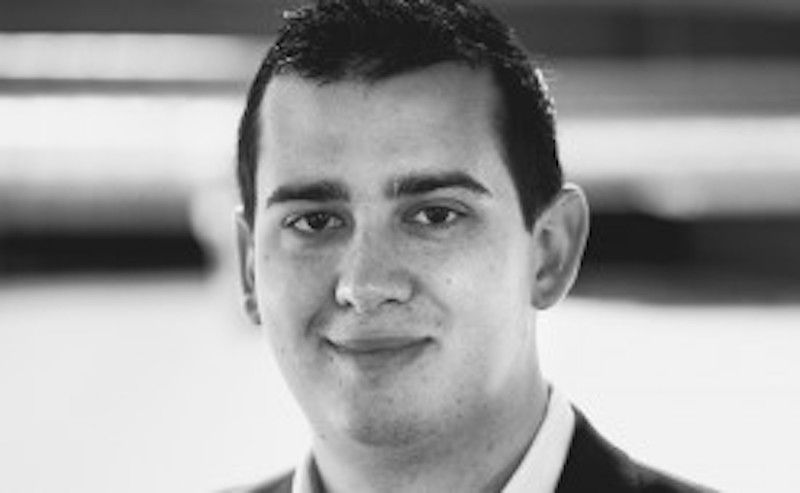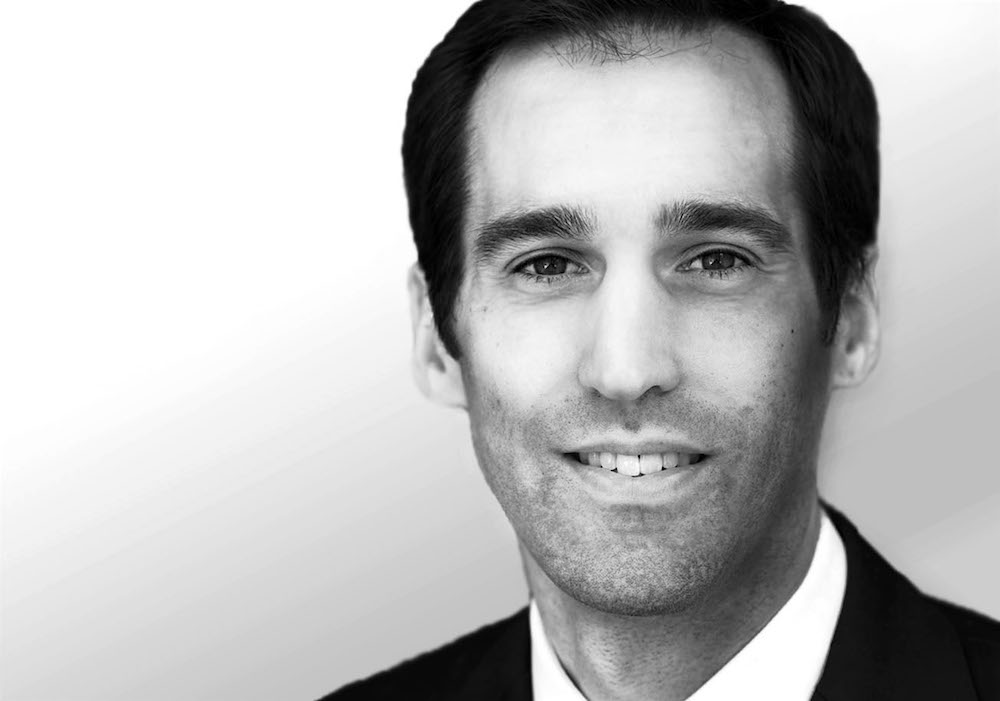
Carbon made its UK debut advanced manufacturing show appearance at TCT in Birmingham recently, and I got to sit down with Phil DeSimone (VP of Business Development) and Paul DiLaura (newly appointed VP of Sales) for a chat about the company’s novel business model based around the CLIP 3D printing process, the M1 platform and the ever increasing palette of functional engineering materials.
I’ve met Phil on numerous occasions and his eyes never fail to twinkle (always a bonus during an interview) but this was the first time I had met Paul, who came to Carbon from the same role at Dassault Systemes, a fact that demonstrates, to me at least, a couple of things about this new industry entrant. First, how serious this company is in its approach to the market, and second, the emphasis that is being placed on the structure of the company but more importantly, the team within that structure. Phil told me “it’s really important to have the right people in the right positions, that not only believe in what we’re doing, but who ‘belong’ in the team.”
I dived straight in, and asked about the Carbon business model, which, unusually for the 3D printing industry, is subscription based with a seeming intent to be different.
Paul took this one on, and with good reason, it turned out: “Part of our approach with the business model is that it’s part of a broader trend of many things moving to a service – certainly I saw this in software. Most software companies are moving to a subscription model — the Software as a Service (SaaS) model. Many major software companies are focused on that and customers are interested in it, because they want to be able to utilise software based on what they need and when they need it and be able to ramp it up or down, again, based on their requirements.”
We were in full agreement that SaaS is an increasing trend, but Paul also pointed to other products that are following this trend, citing the jet engine market!
Paul continued: “There are a lot of different industries that are moving in that direction, so what we’re doing at Carbon is in many ways consistent with this trend — having our product and our support capabilities delivered as a service and also delivered in a way that new things can be added regularly. So for instance, if we release a new resin material, we can push a new software update out simultaneously and our customers can be printing with it that day — no additional cost, no messing around — so there’s an expansion of opportunity over time.”

Before I could enquire further about the aerospace reference, Phil picked up on it, and directly cited GE as a company that “sells power by the hour.” He said: “On a support level, this is new ground. So, instead of just shipping and dropping something off and saying ‘good luck’ as many companies would typically do — GE was putting their name on a product with a certain level of service associated with it to create a better user experience.”
At this point, talking about GE, we went off on a bit of a tangent and way, way off the record, which was fun but can’t be recounted here for obvious reasons! We did get back on topic eventually though, and Phil continued:
“No-one in capital equipment, in manufacturing that we know about, even on the CNC / IM side, have come up with this kind of mind set or approach to the market, and our goal is to provide the leading edge every day. Every year, year after year our customers will always have the best that we have to offer. At first, people come in and they say: ‘Oh, you know, we’re rather concerned about this, because it’s not normal.’ People are not used to this, and don’t tend to trust ‘different!’ But when we show them the advantages and help them to really understand them and how we’re not going to release a new machine and two new materials for that machine and force them to buy that new machine to use those new materials — rather they’re always going to have access to the best, then the value proposition becomes very, very clear. I think we’ve had really good success, and once more people get it, and see the level of service they get and the constant improvement they benefit from, they’ll buy in. For example, even over the last several months, where we came from, to where we are today, the acceleration of printing across our users is phenomenal. It’s really really exciting to watch – as we have that uptake going on. It’s mainly because of the improvement of the technology — it’s constantly improving and they always benefit from it straight away.”
Paul took over again at this point: “Also, from a service and support perspective, it’s something we want to differentiate ourselves with and provide a really high level of support to our customers. For most people 3D printing with capital equipment, when they buy a machine they also “can” buy a service and support contract, which is not included in the original price. But our model includes ALL of the service and support from the outset. This aligns nicely with the needs of our customers, and anything they need, it’s included and they don’t have to worry about additional costs.”
I found it difficult to argue any of this, but, all their own words, and there for you to judge for yourselves.
I moved on to another, fairly regular, complaint I hear against the Carbon process, namely that of the lengthy post-processing requirements. So, while the materials themselves are unique in 3D printing, the nature of the resin process requires considerable curing time once the parts are off the machine. I asked the guys to give me their insight on this, how it fits into the overall process and how that compares in terms of times and part results with other processes.
Phil took this one: “So, up front, the post processing aspect is something that we are constantly working on. At the end of the day though, for any process [resin / powder / FDM] it’s all about cost per part. So if you add up the machine time, the build and the post-processing time – it comes out to ‘some number.’ If you actually look at that baking step with CLIP, in real terms it’s low cost, it’s pennies! Because you’re talking about an overall fixed cost structure that you are democratizing over many years, and the cost per part value of that is very low.”
When I pushed on the time costs, Phil went on to justify that as follows: “Yes, even in time, and so when you look at production applications, having something come out efficiently and then goes through a four hour bake, it’s really not that complicated or time-consuming. We have continuous kilns now, people are doing those types of things. But don’t get me wrong, it’s still something we’re trying to figure out, to improve it and make it better, and it will be the biggest improvement we’re going to make on our technology going forward. To date, we’ve spent a lot of time on the pre-processing, we’ve spent a lot of time on the machines and on the resins, we’re now, as a company starting to expand following our fund-raising and there’s been a lot of effort focusing on how to simplify and optimise that post-processing step.”
He also qualified: “It’s not that much different to current SLA technologies. And if you look at SLS and the fusion type technologies – just look at the cooling times – it can be 20 hours for a part to cool down, and that doesn’t even include the powder vacuuming and blasting excess powder. 3D printing in general has a post-processing problem!”
He set me up beautifully, and I took the opportunity to ask what they thought of the new Rize process in this regard: “I’ve looked at that, but still don’t quite understand the process yet. They have a great team but I just don’t know enough about the technology to comment on that yet.” But we did agree that the potential of Rize’s offering is very promising.
So back to post processing, and Phil continued “This is everyone’s problem, this is an industry burden, not just us. And it’s something we’re going to address and bring innovation, just like we’ve done with our materials and 3D printer and software and the architecture we’ve developed. We’re going to do the same with post-processing — it’s just a matter of time.”
We then moved on to the industry at large and the general upsurge in positivity driven by some of the changes taking place within some of the larger companies, in particular. Both Phil and Paul were very bullish in their appreciation of competition: “it makes us all better,” commented Phil. And then continued with an analogy to the Silicon Valley culture: “historically, it’s been driven by competition. Everyone has a different technology, everyone’s tech is going to have a different and individual unique niche, but they drive each other. So in 3D printing, of course there are things that SLS will be good at that we’re not, and there are things that FDM are good at that we’re not. But our big thing is that we focus on applications — applications that we can do that no one else in the world can do. Where we can bring our knowledge and technology and make an application better. If we do that then we’re going to be successful.”
Via Carbon

